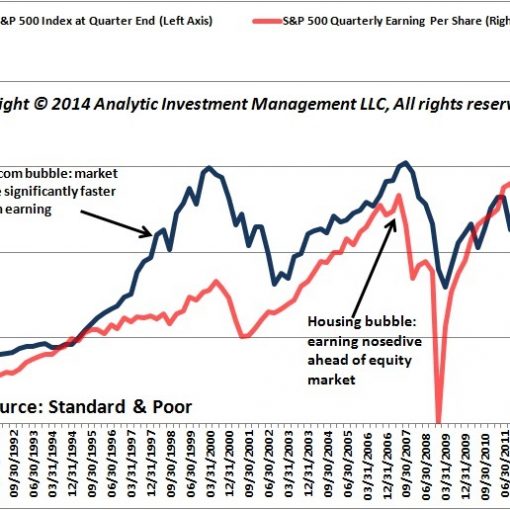by Michael Tarsala
 Defensive stocks including utilities have had a big run since May, but now is not the time to buy them, says Bill DeShurko, manager of the Dividend and Income Plus model.
Defensive stocks including utilities have had a big run since May, but now is not the time to buy them, says Bill DeShurko, manager of the Dividend and Income Plus model.
“A lot of the classic defensive sectors have run up too much,” DeShurko says, “If you’re buying now, you’re getting in too late in the game.”
DeShurko always stays on the hunt for quality stocks that are increasing their earnings, pay a dividend of 4% or more, and trade at price-to-earnings multiples of 15 or less. A recent scan on those criteria yielded very few companies, and none that he wanted to buy, he said.
Part of the reason is that defensive sectors have become crowded investments over the past month. The Utilities Select Sector SPDR (XLU), in particular, is well above its trendline,and is now in overbought territory, he says. Many stocks in the utilities group are trading at price-to-earnings multiples well above the rest of the market, and above historical norms.
Finding stocks in any sector that are increasing their earnings is becoming harder, DeShurko says. He cites Thomson Reuters data that says third-quarter earnings for the S&P 500 will shrink for the first time since the recession ended, and are likely to show the third-straight quarter of slowing profit growth.
Slow revenue growth also is a potential sign of declining earnings quality for many companies. Analyst John Butters at FactSet Research this week notes that only 42% of companies are beating second-quarter revenue estimates – the lowest percentage of sales beats since the first quarter of 2009.
A strong dollar relative to the euro has hurt overseas sales results at companies including McDonald’s (MCD). A weak economy was cited for earnings misses even among some of the strongest U.S. companies, including Apple Computer (AAPL). And slowing growth in China was noted by U.S. industrial companies including Honeywell (HON).
“I’m not keeping the bar all that high. It’s just hard to find inexpensive dividend-paying companies that are going to grow their earnings at all this year,” DeShurko said.
DeShurko says he is making few new moves, as he sees stocks being potentially extended. His current strategy includes:
- Owning high dividend-paying stocks, above the S&P 500 average of around 2%.
- Holding low beta-beta stocks that are trading at multiples at or below the rest of the market.
- Making few new purchases outside of the high-dividend and low-beta universe.
“It’s not what anyone wants to hear,but there are times when taking a lot of new positions is not particularly bright,” DeShurko said. “And I think that this is one of those times.”
![We look for dividends, quality and value, like Cisco Systems – Harvest Financial [radio interview]](/content/default.jpg)

